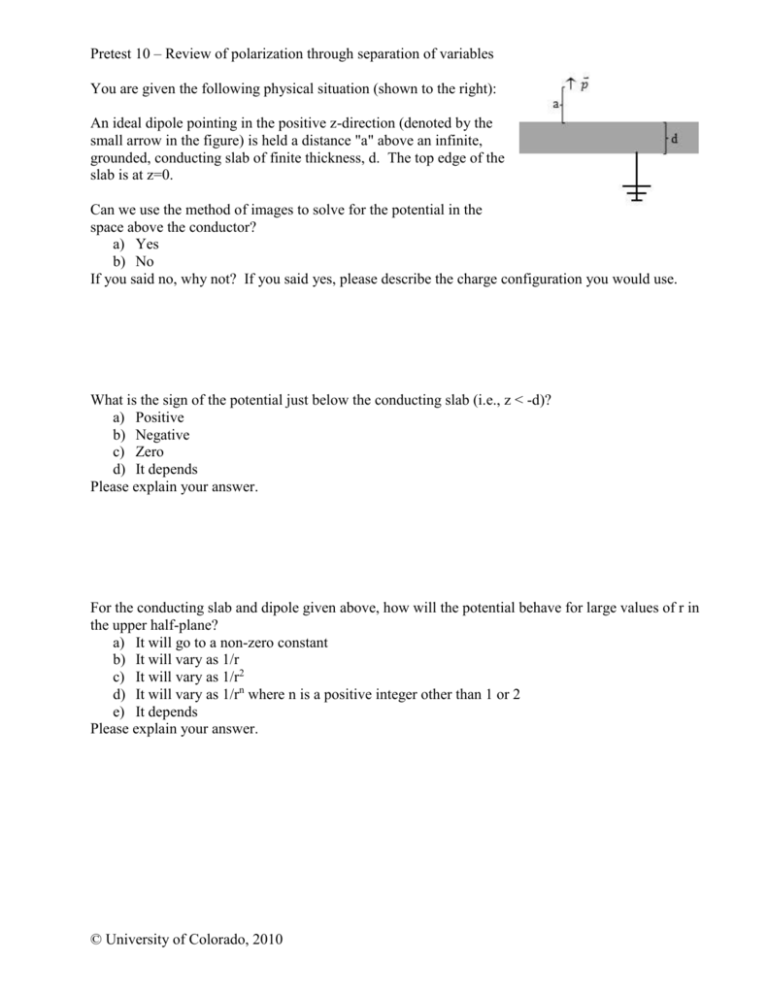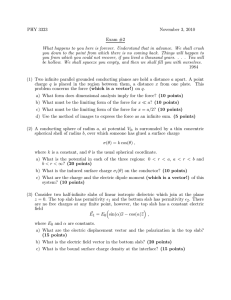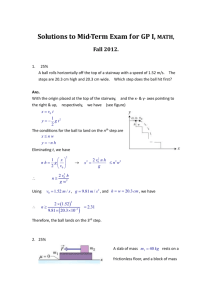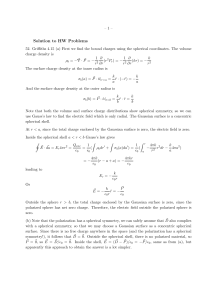Pretest10-Midterm_re.. - University of Colorado Boulder
advertisement

Pretest 10 – Review of polarization through separation of variables You are given the following physical situation (shown to the right): An ideal dipole pointing in the positive z-direction (denoted by the small arrow in the figure) is held a distance "a" above an infinite, grounded, conducting slab of finite thickness, d. The top edge of the slab is at z=0. Can we use the method of images to solve for the potential in the space above the conductor? a) Yes b) No If you said no, why not? If you said yes, please describe the charge configuration you would use. What is the sign of the potential just below the conducting slab (i.e., z < -d)? a) Positive b) Negative c) Zero d) It depends Please explain your answer. For the conducting slab and dipole given above, how will the potential behave for large values of r in the upper half-plane? a) It will go to a non-zero constant b) It will vary as 1/r c) It will vary as 1/r2 d) It will vary as 1/rn where n is a positive integer other than 1 or 2 e) It depends Please explain your answer. © University of Colorado, 2010 Pretest 10 – Review of polarization through separation of variables Consider the two differential equations where C1+C2= 0. and Given the boundary conditions pictured below, which coordinate should be assigned to the negative constant? Please choose one. a) X b) Y c) Neither: C1 = C2 = 0 d) It doesn't matter e) It depends Please explain your answer to the previous problem. Given f(x) = A exp(kx) + B exp(-kx), the boundary condition f(0) = 0 implies what? Please circle ALL that apply. a) A=0 b) B=0 c) k=0 d) k=nπ, n=1,2,3,… e) None of these Please explain your reasoning: Consider the configuration to the right with an infinite plane with negative surface charge density and an infinite slab of dielectric (grey shading). In empty space, the charged wall by itself would create an E-field How does the magnitude of the electric displacement, D, compare in regions I and II? a) DI < DII b) DI = DII c) DI > DII How does the magnitude of the electric field, E, compare in regions I and II? a) EI < EII b) EI = EII c) EI > EII How does the magnitude of the polarization, P, compare in regions I and II? a) PI < PII b) PI = PII c) PI > PII Please explain your answers to the previous three questions. © University of Colorado, 2010 . Pretest 10 – Review of polarization through separation of variables In class (and Griffiths) we frequently write down . A student has a homework problem with a spherically symmetric charge distribution, for all r. She is being asked to solve for voltage throughout space. She is trying to decide if the equation (above) would be a useful step towards a solution. Can she fruitfully use the above equation? Please choose one. a) Yes, the equation above will be useful to find V in all regions of space b) Yes, the equation above will be useful to find V, but only in certain limited regions of space c) No, the equation above is not particularly useful to find V anywhere Please explain your reasoning for your answer to the previous question (If you think it is only useful in certain regions - which ones? If you think the equation is not useful, what method would you suggest?): © University of Colorado, 2010











